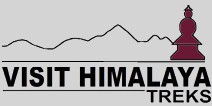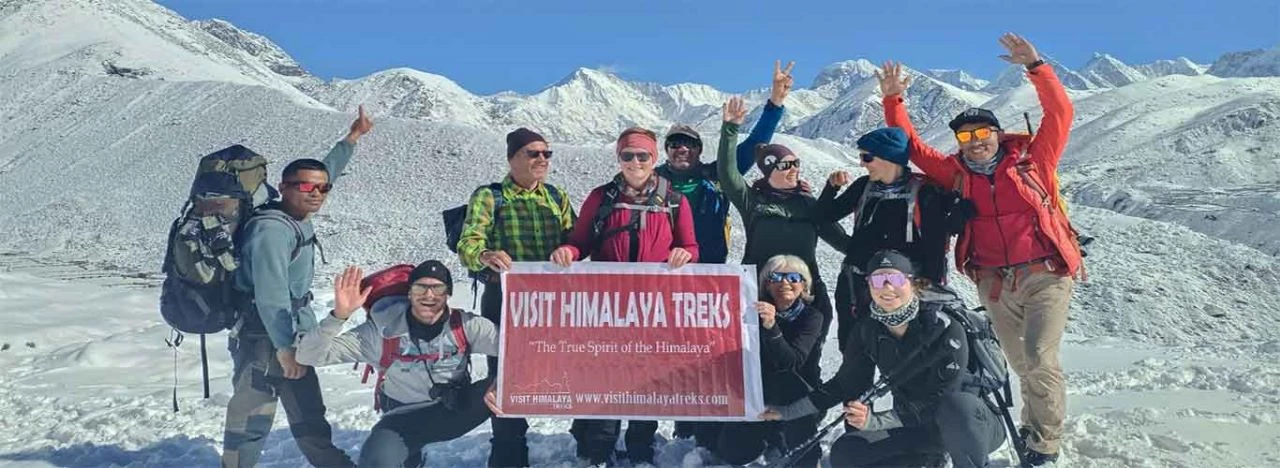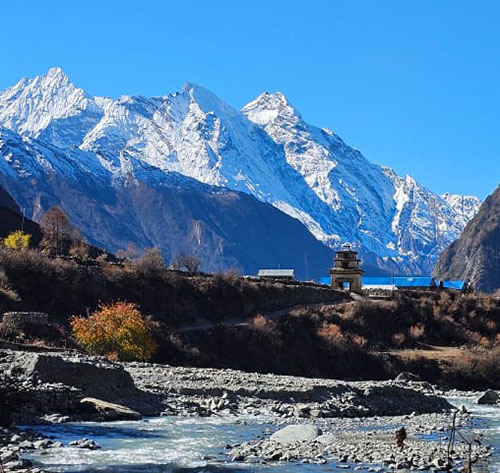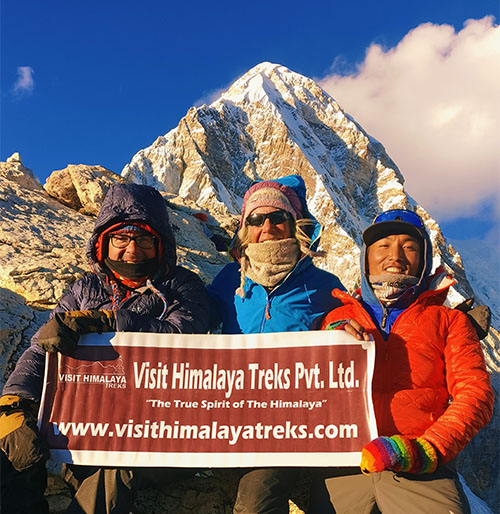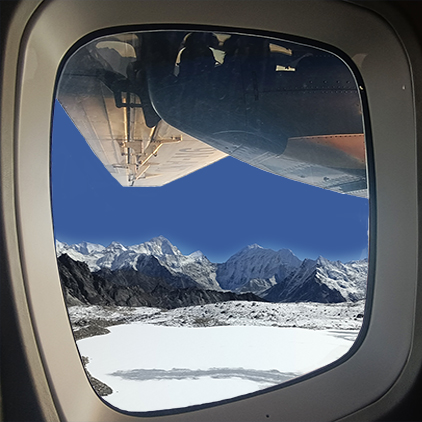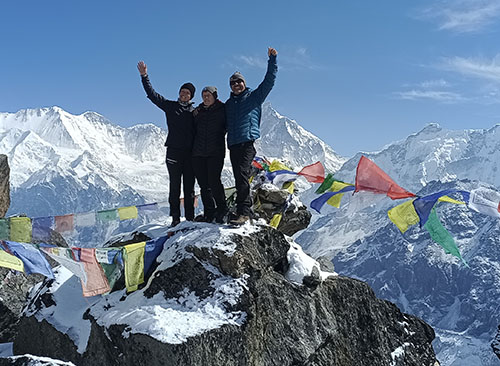Embarking on a trekking adventure in Nepal is a dream come true for many outdoor enthusiasts. With its breathtaking landscapes, majestic peaks, and rich cultural heritage, Nepal offers an unparalleled trekking experience. However, before you set foot on the trail, there are a few crucial factors to consider to ensure a safe and memorable journey. In this blog post, we'll explore the key considerations that should be on your checklist before trekking in Nepal.
Select the Right Trekking and Tour Agencies.
Before planning your vacation in the majestic Nepal Himalayas, it is essential to carefully select a reputable and experienced trekking and tour agency. While many agencies boast about their excellent services on their websites and social media, it is important to verify their performance and reliability.
Don't fall for such claims. Instead, delve deeper by checking client reviews and testimonials to gauge the agency's track record. Additionally, thoroughly examine the proposed itinerary to ensure it aligns with your available time and desired trekking regions.
Opting for well-established companies with a long-standing presence in Nepal is often a wise choice. These experienced companies may not have all the flashy information. But they have a proven track record of offering exceptional and successful trips and treks in Nepal over the years.
When it comes to outdoor activities like trekking and hiking, their expertise and experience can be invaluable. By choosing a trusted agency, you can embark on your adventure with confidence, knowing that you have made a well-informed decision.
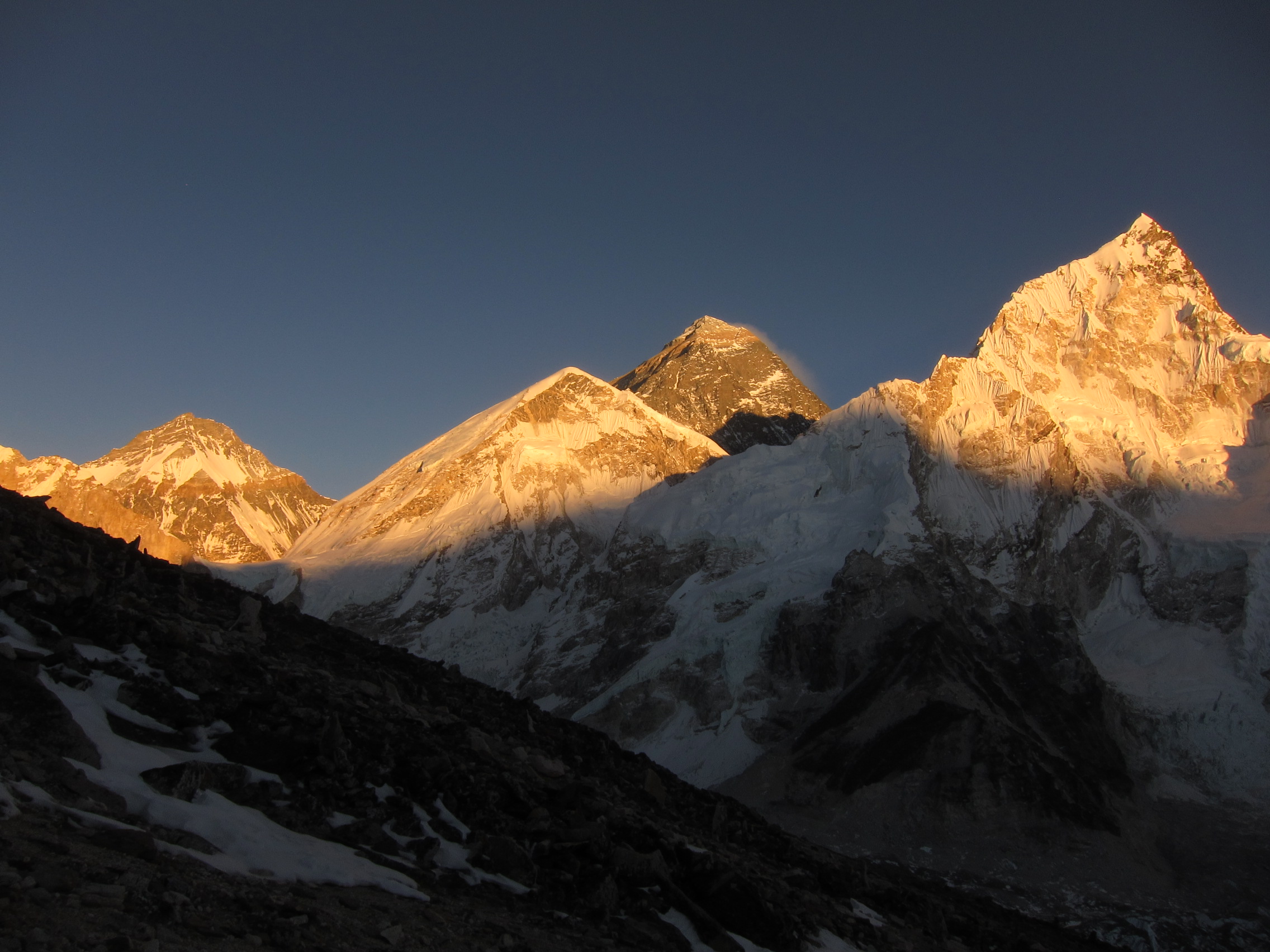
Mt. Everest View from Kala Pathhar View Point.
Conducting Research: A Crucial Step in Choosing the Perfect Trekking Destination
When embarking on a wonderful adventure in the Nepal Himalayas, whether with friends, family or as a solo trekker, it is essential to conduct some research. One crucial aspect to consider is whether to trek independently or with a guide and porter.
Local trekking companies often provide group trip departures on specific dates during the best seasons of the year. It is important to gather information about these group departures, including the number of people in each group and the nationalities of the trekking members. Additionally, choose a trek that aligns with your physical abilities and matches the duration of your holiday in Nepal. Itineraries are different with various times and duration.
It is advisable to select a trek that allows ample time to explore the local cultures and includes rest days for acclimatization. This ensures a well-rounded experience and helps mitigate the risks of altitude sickness. By conducting thorough research and making informed decisions, you can maximize your enjoyment and safety while trekking in the Nepal Himalayas.
Preparing Your Physical Fitness and Training for the Trek Ahead
To embark on short or long adventures in the Himalayas, it is imperative for all visitors to be physically fit and in good health. The trails in Nepal involve steep ascents and descents, making it essential for trekkers to prepare themselves. Therefore, it is recommended to engage in training exercises before or after planning and booking your trek in the Nepal Himalayas.
Incorporating daily exercise into your routine is crucial. You can enjoy hour-long walks or jogging sessions in the morning or evening. Or participate in activities like swimming, aerobics, Cycling, or Zumba. It'll make you fit physically and ready enough for one of the best treks in Nepal. Additionally, it is advisable to check your dietary habits and seek advice from your healthcare provider.
By prioritizing physical fitness and health, you will enhance your overall trekking experience, increase your endurance, and reduce the risk of injuries or health complications. Embrace a proactive approach to training and take the necessary steps to ensure your body is adequately prepared for the incredible adventures that await you in the Nepal Himalayas.
Obtain necessary permits and documents for the treks
Obtaining the necessary permits for your trek will be facilitated by the trekking company you book. Once you have made your adventure holiday reservation and paid the required deposit, the local agency will proceed to obtain the required trekking permits. To complete this process, they will collect your passport details and passport-sized photos. These permits encompass the specific trekking region you have chosen and also include national park and conservation fees.
For treks in restricted areas of Nepal, an additional special fee is charged, depending on the specific trekking regions.
Travel and Medical Insurance
One of the most crucial aspects to consider before embarking on any treks or mountaineering expeditions in Nepal is purchasing comprehensive travel and medical insurance in your home country. Acquiring insurance beforehand proves much easier than doing so in Nepal. Travel insurance provides coverage in case of trek delays, cancellations, or rerouting to alternative areas, which can occur due to inclement weather conditions or unforeseen circumstances.
Nepal's challenging terrain and unpredictable weather conditions, including irregular domestic flights and road blockades caused by landslides, avalanches, or political unrest, can lead to unexpected situations. Such circumstances can arise anywhere in the world. Having travel insurance ensures you are financially protected, allowing you to claim expenses incurred due to these unforeseen events.
Medical insurance is especially crucial in case of unfortunate illnesses or accidents during your journey. High-altitude sickness, such as Acute Mountain Sickness (AMS), is common in demanding treks like Everest Base Camp or when traversing high Himalayan passes. If a traveler falls ill and needs to discontinue the journey or requires immediate medical evacuation, having medical insurance becomes indispensable.
Helicopter services are often used for swift evacuation to Kathmandu or Pokhara for treatment. The expenses associated with rescue operations, medical bills, and additional accommodation in Kathmandu can be claimed through your insurance company. The Rescue Company and Hospital will provide the medical report (necessary documentation), including a legal letter certifying the unfortunate illness and additional expenses incurred.
By obtaining comprehensive travel and medical insurance, you provide yourself with a safety net, ensuring that unforeseen circumstances or health emergencies do not hinder your adventurous trekking in Nepal. Prioritize your peace of mind and financial security by securing the appropriate insurance coverage before embarking on your journey.
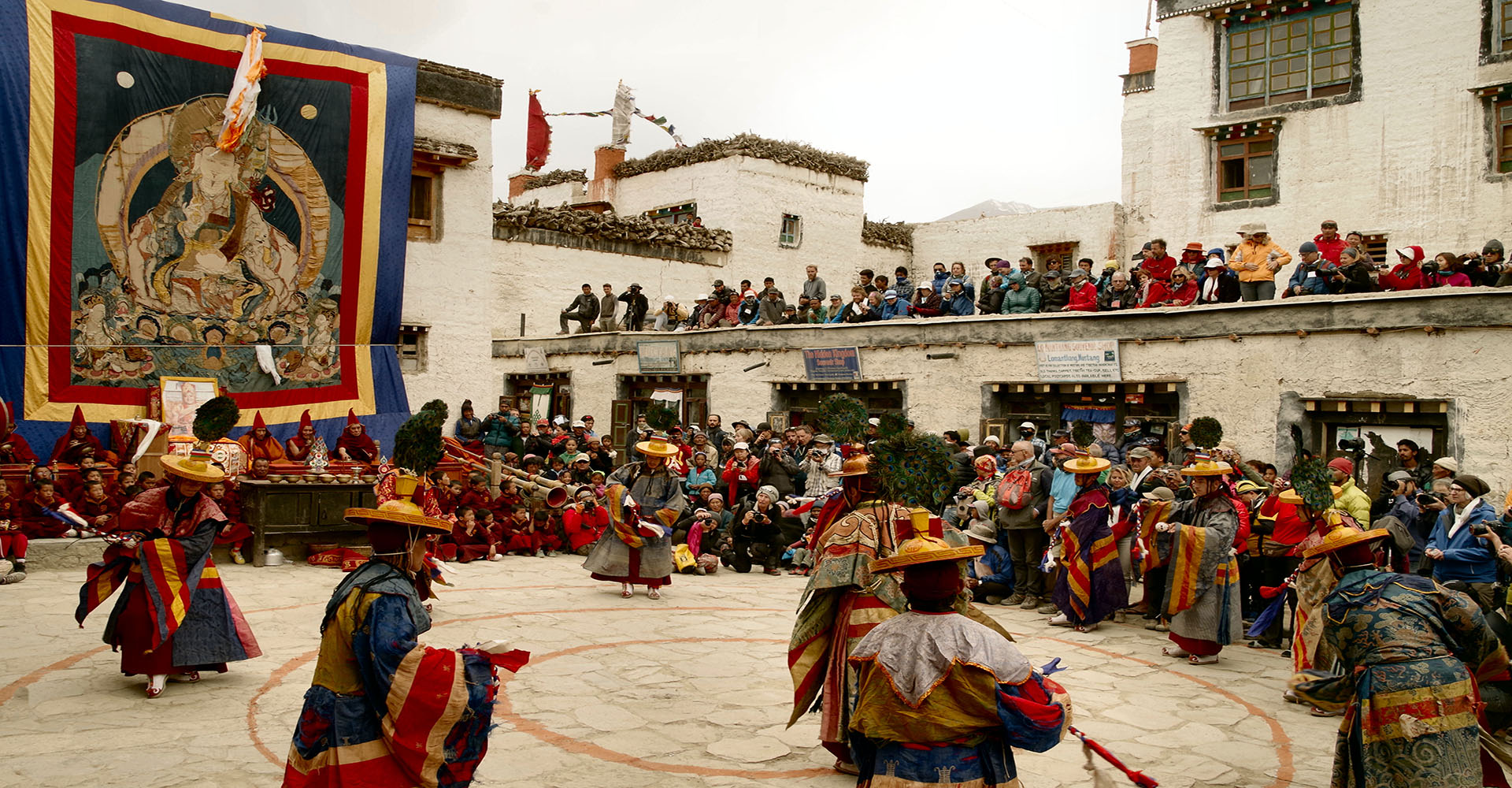
Celebrating Buddhist festival Tiji Upper Mustang Nepal.
Personal Gear and Trekking Equipment
Depending on the specific trekking areas and the prevailing season, it is crucial to prepare the appropriate personal gear and trekking equipment. Once you have chosen your desired trip, obtain a comprehensive list of clothing, trekking gear, and equipment that will suit your adventure.
For high-altitude treks and crossing challenging passes, it is essential to have suitable warm gear such as down jackets, fleece clothing, sun hats, and woolen tops. Investing in a good pair of trekking boots, preferably water or snowproof, is the first step. Additionally, carrying snow gaiters, gloves, sun or snow goggles, an ample supply of sunblock creams, and a comfortable daypack with a minimum capacity of 5 liters is highly recommended.
Other essential items include a four-season down sleeping bag with an inner liner, and a duffel bag (will be provided by our Company) for heavier belongings which will carry by porter and ski or walking poles for added support. It is also important to carry a personal medical or first aid kit, along with any additional items mentioned on the trekking gear list. Alternatively, you can also hire or rent at a reasonable price in Kathmandu or Pokhara.
By ensuring you have the appropriate gear and equipment tailored to the trekking terrain and season, you will enhance your comfort, safety, and overall trekking experience.
Know about Altitude Sickness & Acclimatization for a safe trek
When trekking in high-altitude regions of the Nepal Himalayas, especially those involving passes above 5,000m or reaching heights of 4,000m to 5,000m, it is crucial to be aware of the risks of altitude sickness. Symptoms can manifest at any time and place with high elevation. Many trekkers experience slight to severe headaches as a result of altitude-related symptoms.
To address emergencies related to Acute Mountain Sickness (AMS) or Altitude Sickness, most trekking companies provide guides equipped with Gamow Bags. These inflatable pressure tubes provide temporary relief by simulating a lower altitude environment until the sick individual recovers. However, it is important to note that the Gamow Bag is not a permanent solution. The patient should be brought to a lower altitude if symptoms persist.
Some individuals may opt to use Diamox or Acetazolamide, a medication that can assist with altitude symptoms, but it is crucial to seek advice from a healthcare professional before taking any medications. Guides and team leaders play a vital role in taking precautions regarding altitude, food, and beverages during treks. Despite their best efforts, mild sickness due to high altitudes or spicy foods may still affect some trekkers. In severe cases, the patient should be brought down to a safe altitude, and immediate evacuation may be necessary through the fastest available means of transportation. In such cases, Travel and Medical Insurance will cover these expenses.
By understanding the risks, taking necessary precautions, and being informed about insurance coverage, trekkers can prioritize their safety and well-being while enjoying the remarkable landscapes of the Nepal Himalayas.
Using Only Licensed Leaders and Guides
In Nepal, all trekkers need to travel only with well-registered Government-authorized companies. No individual or solo trekkers are allowed, from the year 2023 onwards till further notice. When booking the chosen treks, the company will provide you with expert guides and leaders (if the group exceeds more than 4-6 people). All guides and leaders are approved by the Nepal Tourism Department having decades of trekking experience. All guides and leaders must have proper Identification and Government Authorized Licenses to lead and take care of the trekkers.
Trekking seasons and weather conditions
Nepal offers four distinct seasons, each with its allure. Spring (March to May) gradually unveils green hills and vibrant wildflowers. Days are longer with occasional showers of rain and snow. Autumn (September to Mid - December boasts clear skies, cool mornings, and shorter days with crystal blue skies.
Winter (December to February) is ideal for short and moderate treks, with clear, sunny days and cold mornings and nights.
Trekking in Nepal's best seasons
Spring and autumn ensure a memorable experience. Spring showcases nature's rejuvenation, while autumn provides breathtaking views with comfortable temperatures. Winter offers serene beauty and quieter trails for shorter treks.
Consider the specific trekking region and altitude when planning. Spring brings greener landscapes, while autumn offers clear skies. Winter treks are suitable for lower altitudes and moderate hikes.
Each season has its unique charm, allowing trekkers to immerse themselves in Nepal's awe-inspiring landscapes. Choose the ideal season for your adventure and create lasting memories amidst the Himalayan wonders.
Vaccination and Health Requirements
At present after the bad times of Covid 19, it has been more than four years since the world is free for travelers. As there were certain restrictions on medical grounds, in Nepal it's safe and easy to travel. However, one must take care to avoid sickness from foreign diseases or bacteria. But it is always best to bring with you the following documents: A vaccination certificate showing a full dose of vaccination against COVID-19, completed at least 14 days before entering Nepal.
Courses or boosters usually advised: Diphtheria; Hepatitis A; Tetanus; Typhoid. Other vaccines to consider: Hepatitis B; Rabies. Selectively advised vaccines - only for those individuals at highest risk: Cholera; Japanese Encephalitis.
As well as declaring your medical history, for any illness which you can get from your doctors before entering Nepal.
Obtaining Nepal Entry Visa
Travelers to Nepal can obtain a Nepal Entry visa from their home country at Nepal Embassies and Consulates. If not available can get on arrival at any entry post as designated by the Nepal Government and Immigration Department.
The Tourist Visa fee for up to 15 Days: US$ 30.
Nepal Tourist Visa fee for up to 30 Days: US$ 50.
Nepal Tourist Visa fee for up to 90 Days: US$ 125.
When traveling to Tibet or Bhutan via Nepal, requires a double entry visa which you can collect the details and information, from your local agent in Kathmandu.
Currency used in Nepal and its availability
On booking with a reliable trekking company in Nepal, most expenses are included in the trek cost. The only extra money required for own individual expenses for extra snacks, drinks, sightseeing entrance fee and tips for the guide, porters and driver as well buying souvenirs.
Trekkers need to carry extra cash in local currency that is Nepali Rupees equivalent to US$ 300 to 500. For own personal expenses and tipping of the staff and porters at the end of trekking. People who enjoy drinking hard drinks or beer need to carry an extra US$ 100 to 200. As the drinks are expensive around high mountain villages. Best to drink alcohol products on the way down, drinking alcohol on the way up is not advisable and can lead to serious circumstances.
At present US$ 1 is equivalent to approx. Nepali Rupees 130 (subject to change daily or weekly as the rate mentioned June 2023).
To exchange your currency in NPR, there are various exchange service providers in Nepal. You don't have to worry about the hassle of getting NPR.
Carry small bills while trekking in Nepal for personal expenses
Trekking in the remote corners of the Nepal Himalayas often means encountering small villages and towns where there may be a scarcity of smaller currency. To avoid any inconvenience and save time when making payments at shops, stores, and restaurants in rural areas, trekkers should carry smaller bills.
The currency in Nepal is the Nepalese Rupee (NPR), which comes in various denominations. The smaller denomination is called Paisa, where 100 Paisa makes 1 Rupee. The available bill denominations are 1, 2, 5, 10, 20, 50, 100, 500, and 1000 Rupees. Many of these notes feature images of animals, with larger animals depicted on higher-value bills. For example, the thousand Rupee note showcases an elephant, while the five hundred Rupee note features a tiger, and the hundred Rupee note displays a rhinoceros. Additionally, some notes depict prominent landmarks of the country and the national emblem/logo.
Trekking Kit and Gear for Hire in Nepal
A fascinating aspect to note is that in Kathmandu, Pokhara, and along the Everest route in Lukla and Namche Bazaar, trekkers will discover a wide array of gear, items, and equipment for trekking, peak climbing, and major mountaineering. Nepal offers a surprising variety of brands, ranging from local to international products.
For those in need of trekking and climbing gear, renting or hiring equipment is a convenient option. In the Thamel area of Kathmandu alone, there are over 20-30 trekking and mountaineering shops and stores. Here, trekkers can rent sleeping bags, down jackets, and climbing gear at reasonable prices. When renting equipment, a deposit is usually required. And it can be arranged either directly with the rental shop or through the trekking company you are associated with. It is important to return the rented gear in good condition, allowing for expected wear and tear from the trek. However, any loss or damage to the equipment may result in having to pay the full price of the item.
This availability of rental gear provides trekkers with a convenient and cost-effective solution, eliminating the need to carry bulky equipment from their home countries. It is essential to respect the terms of the rental agreement. Also one should take care of the gear during the trekking journey. By utilizing these rental services, trekkers can have access to quality gear while keeping their backpacks lighter and their adventures more enjoyable.
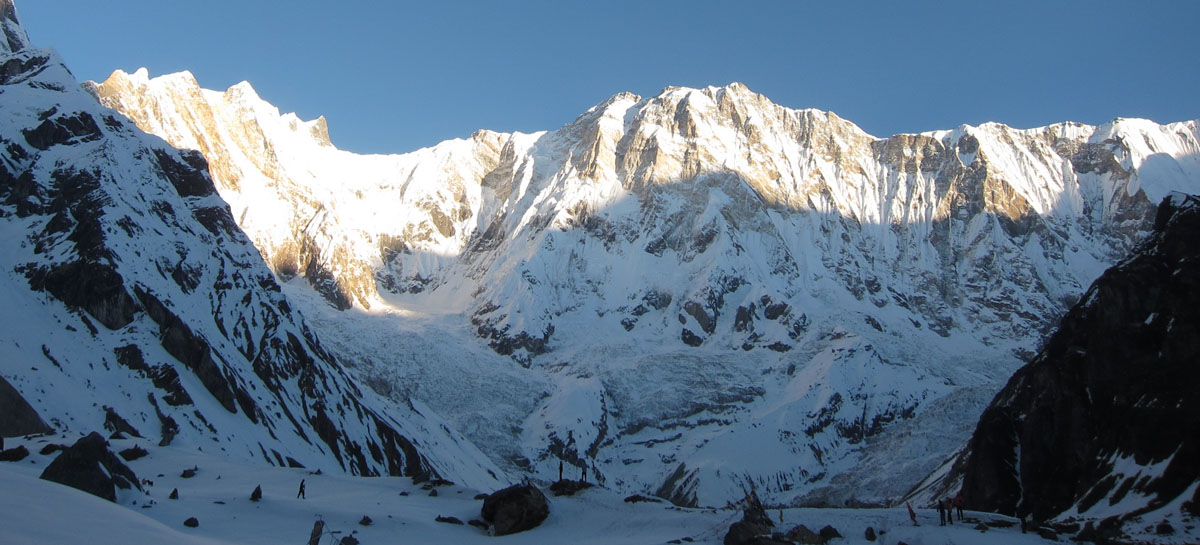
Breathtaking Himalayan View from Annapurna Base Camp.
Tipping and Gratitude in Nepal
Tipping serves as a gesture of gratitude for the services provided by the dedicated team of trekking staff and porters. It varies depending on the duration, group size, and type of trek, ranging from moderate to challenging adventures. Originating from the British Raj in India, it gradually became customary in Nepal as well. Initially, mountaineering expeditions set the trend of rewarding their team members for their exceptional work and assistance. With the steady flow of tourism over the years, tipping has become a tradition in many Asian countries, including Nepal.
On treks, it is customary for tipping to be collected from all group members and handed over to the trekking leader or Sirdar. The head guide then distributes the tips among the staff and porters, including their own share. Alternatively, on the last night of the trek, an elder member of the group can personally present the tips to the staff and porters, following a small celebration.
For moderate and shorter treks lasting a week or more, it is recommended to allocate a total of approximately US$100 to US$200 per group member. However, higher amounts may be considered for longer and high-altitude treks, as well as larger group sizes and the number of trekking staff involved.
It is important to note that tipping amounts are not fixed. It can be adjusted based on your discretion, the quality of service received, and personal satisfaction. Tipping provides an opportunity to express appreciation and support for the hard work and dedication of the trekking staff and porters who contribute to making your trekking experience in Nepal memorable.
Trust the above information provided by Visit Himalaya Treks will be helpful to plan your adventure holiday in Nepal with us.
